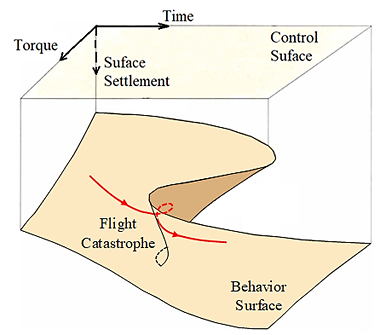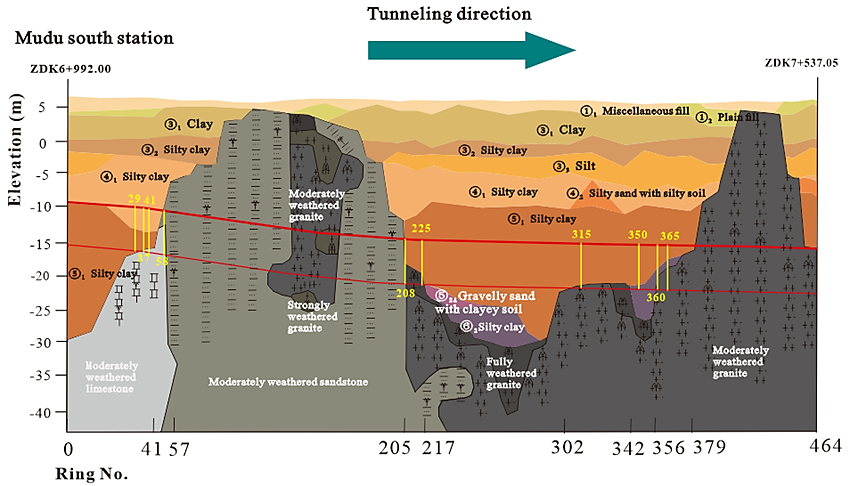Ground collapse is one of the most widespread and frequently occurring geological disasters in China. In total, more than 30 large and medium-sized cities, 100 prefecture-level cities and 420 counties in China are at high risk of ground collapse. Anthropogenic engineering activities, such as underground mining and underground space development, are the main causes of urban ground collapse.
In the underground space development scenario, the inherent variability existing within the composite strata for tunnelling is one of the major causes of ground collapse. In particular, the rock-soil interface (RSI) mixed ground, where residual or transported soils overlie bedrock, is one of the most encountered composite strata in shield tunnelling. The high spatial variability of the RSI interface introduces strong uncertainties in both subsurface stratigraphy and geotechnical properties. Inaccurate interpretation of such uncertainties during engineering geology investigations increases the risk of ground collapse.
Steady states and critical (or catastrophic) states alternate in most physical processes in the natural world. In the steady state phase, the system parameters change slowly and are easy to observe, while in the critical state phase, the system changes abruptly and is difficult to observe. Catastrophe Theory is a mathematical theory based on differential manifold topology to study the change of dynamical systems, which considers the singularity as the critical point of the nonlinear system state change. Therefore, once the space-time coordinates of the geo-environmental catastrophe singularity can be predicted and identified, it is expected to realize the accurate early warning of ground collapse.
Based on this insight, Associate Prof. Zhang Wei, in collaboration with Prof. Zhu Hong-Hu, developed a novel intelligent computational framework for prediction and early warning of urban ground collapse in shield tunneling scenarios in RSI mixed ground. The framework employs the swarm intelligence algorithm optimized extended Kalmann filter to predict the amount of ground surface displacement at the future moment in real time after the multivariate fusion of the shield tunneling control parameters. Then, the gradient ratio criterion is used to identify whether the future ground surface displacement has entered the critical phase. If so, the moment is a singularity moment that triggers the early waning. The framework has been verified to successfully realize the pre-disaster prediction and early warning of ground collapse induced by shield tunneling through a typical RIS mixed ground. It will help reduce the risk of ground collapse caused by material interface uncertainty and support the construction and development of resilient cities in China.


Fig. 1 Catastrophic differential manifold Fig. 2 Singularity identification criterion

Fig. 3 RSI mixed stratigraphy transversed by the shield machine

Fig. 4 Early warning results of surface displacement prediction before and after ground collapse
This paper was published in Engineering Geology entitled “Forecasting and early warning of shield tunnelling-induced ground collapse in rock-soil interface mixed ground using multivariate data fusion and Catastrophe Theory”. It can be accessed via the following link: https://doi.org/10.1016/j.enggeo.2024.107548. The authors acknowledge the financial support from the National R & D Program of China, the National Outstanding Youth Science Foundation of China, the National NSF of China, and the Jiangsu Provincial Key R & D Program.

